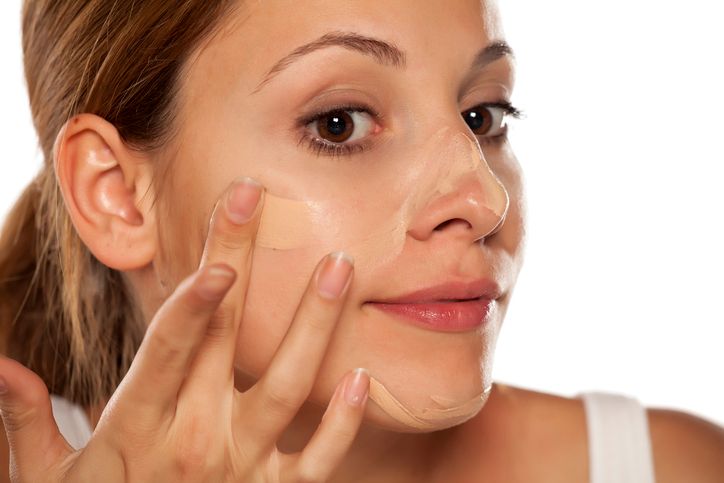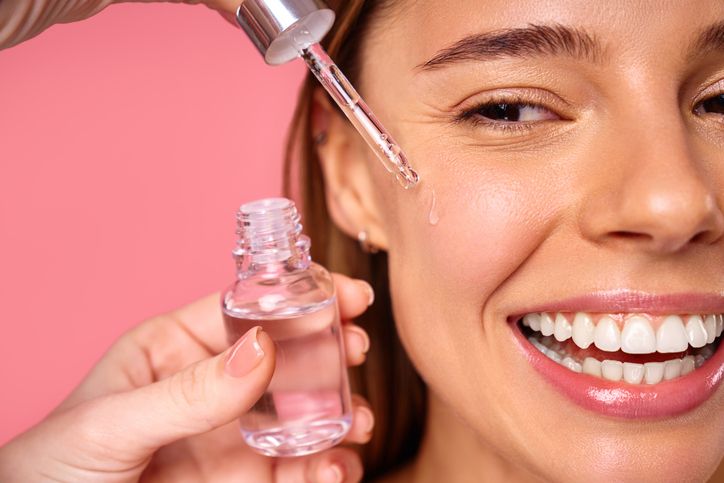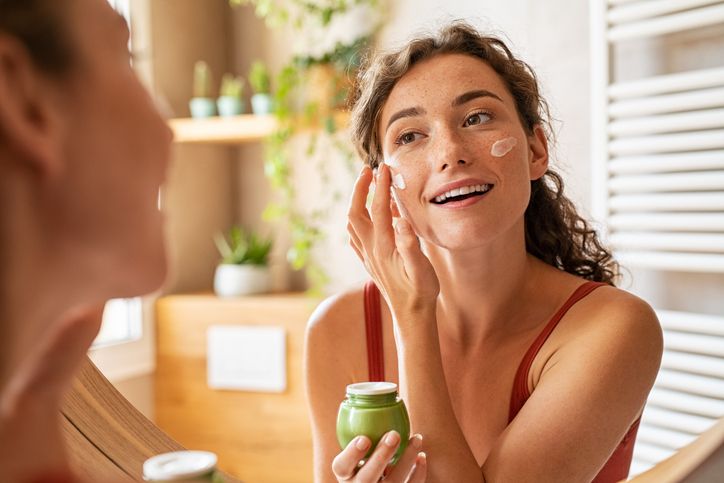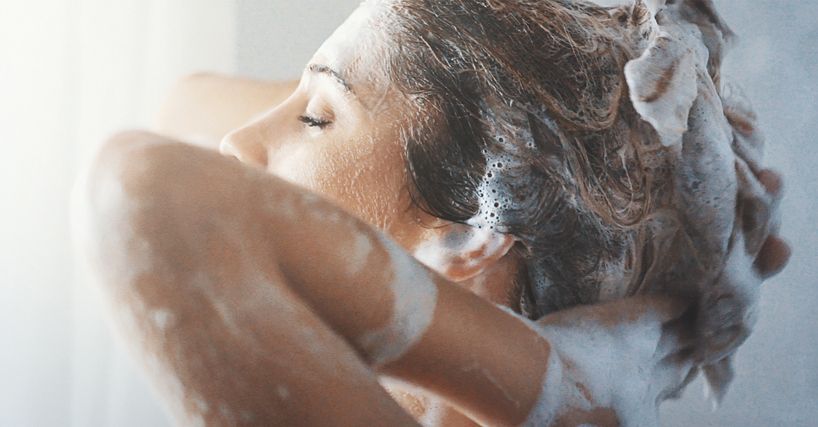Author: Natalie Ng|Updated: 30 April 2025
Bumpy skin is a common issue that affects a lot of people, especially on the upper arms, thighs, and cheeks. For many, those tiny, painless bumps—often called chicken skin or keratosis pilaris—can feel rough, look uneven, and sometimes even itch or turn red. These small bumps are usually caused by clogged pores, a buildup of dead skin cells, or excess keratin that blocks hair follicles. While the condition is harmless, it can still be frustrating, especially if you’re trying to improve your skin’s appearance or get a more smooth surface. This type of rough bumpy skin is especially common in people with keratosis pilaris, and can get worse in dry weather or if your skincare routine isn’t doing much to help. Some even confuse it with acne, eczema, or worse—skin conditions like basal cell carcinoma or infected hair follicles. While it’s usually easy to diagnose keratosis pilaris, not every bumpy texture has the same cause, and not every case needs the same kind of care. In this article, we’ll walk through six practical ways to manage bumpy skin concerns and improve textured skin. Whether you’re dealing with rough patches, raised bumps, or just want to reduce uneven skin texture, these simple steps can help you get closer to clear, smooth skin. Keep reading to find out what really works—and how to make your skin feel soft, not rough to the touch.

Start Smoothing Your Skin with Chemical Exfoliants

Chemical exfoliants are one of the easiest ways to smooth out rough, bumpy skin. They work by clearing away dead skin cells and clearing out clogged pores, which are often the reason behind small bumps or uneven skin texture. If you have keratosis pilaris or chicken skin, this step can make a noticeable difference.
Why it works
Instead of scrubbing the surface like physical exfoliants, chemical exfoliants break down the buildup that causes skin to feel rough or look patchy. They help clear keratin that gets trapped in hair follicles, which is one of the main causes of keratosis pilaris bumps and raised bumps on areas like the upper arms, thighs, or cheeks.
There are two common types used in skincare:
• Alpha hydroxy acids (AHAs) like glycolic acid help smooth the top layer of skin.
• Beta hydroxy acids (BHAs) like salicylic acid go deeper into the pores and are helpful if you also deal with acne or oily areas.
How to use them safely
If you have sensitive skin or are new to chemical exfoliants, start slow. Try gentler options like lactic acid or mandelic acid, two to three times a week after cleansing. This can help improve rough bumps without irritating the skin.
If your skin starts to feel itchy, tight, or dry, reduce how often you use the product and focus on hydration to support your skin barrier.
Don’t skip sunscreen
Chemical exfoliants can make your skin more sensitive to sun exposure. Using sunscreen daily helps protect the treated area and reduces the chance of sun damage, which can lead to skin conditions like basal cell carcinoma later on.

Hydrate Your Skin From Within

Drinking enough water every day can help reduce bumpy skin and improve your skin’s appearance over time. It supports your body’s natural ability to keep your skin balanced, which is key if you're dealing with dry skin, uneven texture, or small bumps caused by keratosis pilaris.
Why internal hydration matters
Skin that lacks moisture often feels rough to the touch and can make keratosis pilaris worse. Internal hydration helps prevent dryness that leads to clogged pores and a buildup of dead skin cells, both of which can cause raised bumps or make textured skin more noticeable.
Aim for around eight glasses of water a day. If you live in a hot climate, have an active lifestyle, or spend time in dry weather, you might need more. Add hydrating foods like cucumbers, watermelon, and leafy greens to your meals—they contain water and support hydration from within.
Consider supplements that support hydration
Some supplements can support your skin’s ability to hold onto moisture and improve its barrier function:
• Hyaluronic acid supplements help retain water in the skin.
• Omega-3 fatty acids support the skin’s natural barrier, especially helpful for sensitive skin that easily dries out.
• Collagen supplements may improve elasticity and reduce rough texture over time by supporting collagen production from within.
These are especially useful if you feel like your skincare routine isn’t enough to keep your skin feeling hydrated or if you want to support your skin during dry seasons.
Create a hydration habit
If you often forget to drink water, use simple reminders. Set alerts on your phone, keep a refillable water bottle nearby, or use a water-tracking app. You don’t need a complicated plan—just make it easy to stay consistent.
Book Now to Experience
Acne Treatment
1 Minute Self-Registration
Date should not be before minimal date

Choose the Right Primer for Your Skin Type

Primers can help blur the look of textured skin and smooth out uneven areas, especially if you’re dealing with bumpy skin or keratosis pilaris on the face. Picking the right type depends on your skin type and how much correction you’re looking for.
Silicone vs. water-based primers
Silicone primers are best if you want to smooth over noticeable skin texture. These formulas fill in pores and raised bumps, creating a more even surface. They work well if you have oily skin or want your makeup to last longer. Because they form a layer on top of the skin, they also help reduce the appearance of rough areas caused by clogged pores or keratin builds.
Water-based primers are lighter and better for sensitive or acne-prone skin. They hydrate without clogging your pores and are a good choice if your skin feels itchy or reacts easily to heavy formulas. While they won’t fill in bumps as much as silicone, they still help soften the look of uneven skin texture in a more breathable way.
Your skin type and your makeup goals will decide which works better. If you want serious texture smoothing, go with silicone. If you just want a light layer that won’t irritate your skin, water-based is a safer bet.
Color-correcting primer benefits
Some primers also include color-correcting pigments that target specific skin concerns:
• Green primers reduce redness from acne or inflamed bumps.
• Lavender primers help brighten dull or yellow-toned skin.
• Peach or orange primers work well for dark spots on light skin or to improve areas affected by sun exposure.
• Pink primers add brightness to tired or dull complexions.
• Blue primers cancel out orange or brown tones, especially helpful for uneven areas caused by past sun damage.
You don’t need to apply these all over your face. Just use a small amount on the areas that need color correction. They blend in easily and give your skin a more even base before applying makeup.

Perfect Your Skincare Layering Technique

If your skincare products aren’t working as well as they should, the order you apply them might be the problem. Proper layering helps ingredients absorb better and makes a big difference if you’re trying to treat rough bumpy skin, textured skin, or dry patches caused by dead skin cells or keratosis pilaris.
Layer from thin to thick
Start with the thinnest products and finish with the thickest. This order helps active ingredients reach the skin before heavier layers block them.
Here’s a simple guide:
| Product Type | Wait Time Between Layers |
|---|---|
| Toners / Essences | 30 seconds |
| Serums | 1–2 minutes |
| Moisturizers | 2–3 minutes |
Begin with water-based products like toners and essences, especially if you’re treating areas that feel rough or show small bumps. Follow with treatment serums—like those containing glycolic acid or salicylic acid—that target clogged pores and uneven texture. Lock in moisture with a cream or oil to keep your skin hydrated, especially if you live in dry weather.
If you're using multiple serums, apply the thinnest one first and let each layer absorb before moving to the next.
Pat, don’t rub
Rubbing products into your skin can cause irritation—especially if you already have sensitive skin or are dealing with keratosis pilaris bumps. Instead, use your fingertips to gently pat each product into the affected area.
Patting improves absorption, supports blood flow, and protects the skin barrier. It also prevents added stress on your skin, which can make conditions like keratosis pilaris worse.
This small change in technique helps your skincare routine work better—and makes your skin feel calmer and less irritated over time.
Book Now to Experience
Acne Treatment
1 Minute Self-Registration
Date should not be before minimal date

Add Retinoids to Your Night Routine

Retinoids help improve bumpy skin by speeding up cell turnover and boosting collagen production. Over time, this helps reduce keratosis pilaris bumps, clogged pores, and uneven skin texture. If you're dealing with textured skin that doesn't seem to improve, retinoids might help clear out dead skin cells and smooth the surface.
Start slow and build up
Retinoids are strong, so it’s best to start with a low concentration. Apply a small amount two nights a week on clean, dry skin. Slowly increase to every other night or more, depending on how your skin reacts.
If you’re new to retinoids, these are some common types:
| Retinoid Type | Strength | Best For |
|---|---|---|
| Retinyl Palmitate | Mild | Beginners |
| Retinol | Moderate | Daily texture concerns |
| Adapalene | Moderate–Strong | Acne-prone skin |
| Tretinoin | Strong | Deeper texture issues |
| Tazarotene | Very Strong | Severe uneven texture |
How to avoid irritation
Retinoids can cause dryness, peeling, or redness, especially on sensitive skin. To avoid this, try one of these options:
• Mix your retinoid with a basic moisturizer (without active ingredients).
• Apply moisturizer first, then layer retinoid on top to reduce irritation.
• Wait 15–20 minutes after cleansing before applying, so your skin isn’t damp.
Always follow with sunscreen in the morning. Retinoids make your skin more sensitive to sun exposure, which can increase the risk of skin conditions and slow down your results.
Retinoids take time, but consistent use can help soften rough bumps, fade uneven patches, and improve the look and feel of your skin.

Consider Acne Treatment for Long-Term Skin Texture Improvement
If you’ve tried exfoliants, layering, and hydration but still struggle with bumpy skin or acne-related texture, professional support might be the next step. One non-invasive option that helps with both acne and uneven texture is the Acne Treatment offered at New Beauty.
This treatment is designed for acne-prone skin, but it also targets common concerns like clogged pores, dead skin cells, keratin buildup, and inflamed hair follicles—all of which can cause raised bumps, rough to the touch skin, or uneven skin texture.
How it works
The Acne Treatment uses a dual spiral suction and drainage system. This deep-cleansing step removes excess keratin, oil, and buildup that block pores and trigger keratosis pilaris, whiteheads, blackheads, and skin bumps. Once the surface is clear, a hydrating serum is infused into the skin. This calms inflammation, balances oil production, and supports collagen production, which helps the skin recover and smooth itself over time.
How it helps with bumpy skin
Bumpy skin can come from many sources—keratin builds, dry skin, infected hair follicles, or underlying skin conditions like keratosis pilaris. This treatment helps by:
• Clearing dead skin cells before they build up in the affected area
• Reducing oil that can cause or worsen painless bumps
• Soothing active inflammation and calming itchy or irritated skin
• Improving hydration to prevent dryness and rough bumpy skin
• Supporting smoother skin with collagen boost
It’s gentle, non-invasive, and suitable for people with sensitive skin or more severe bumpy skin concerns. There’s no downtime, so you can return to your usual routine right after the session.
Treatment advantages
• Clears out clogged pores and reduces future breakouts
• Softens textured skin and improves skin’s appearance
• Reduces visible acne scars, rough bumps, and tiny bumps
• Helps treat keratosis pilaris-like symptoms, especially on upper arms
• Encourages long-term skin balance without oral medication or injections
This treatment is most effective when done regularly, with a monthly session often recommended for lasting results. If your current skincare routine isn’t giving you the results you need, this could be a helpful step toward a consistently smoother skin texture.
Book your consultation today to see if the Acne Treatment is right for your skin.
New Beauty's Acne TreatmentBook Now to Experience
Acne Treatment
1 Minute Self-Registration
Date should not be before minimal date
FAQ
How Long Does It Take to See Results From a New Skincare Routine?
You'll typically start seeing initial changes in your skin within 4-6 weeks of consistently following a new skincare routine. Don't get discouraged if you don't see immediate results - your skin cells need time to regenerate. For more dramatic improvements, especially with concerns like hyperpigmentation or texture, give your routine 12 weeks to reveal its full potential.
Can Bumpy Skin Be Genetic, and What Can I Do About It?
Yes, bumpy skin can be genetic, particularly conditions like keratosis pilaris, which runs in families. But you don't have to accept it as your destiny. You can tackle genetic skin texture through exfoliation with AHA/BHA products, retinoids, and moisturizers rich in urea or lactic acid. Consider consulting a dermatologist who can prescribe stronger treatments or recommend professional procedures if over-the-counter options aren't giving you the results you want.
Should I Change My Skincare Routine Based on the Season?
While winter's chill demands rich moisturizers, summer's heat calls for lighter formulas - your skin's needs shift with the seasons. You'll want to adapt your routine to stay in harmony with nature's rhythm. Switch to gentler cleansers and heavier moisturizers during cold months, but opt for non-comedogenic products and increased exfoliation when it's warm. Don't forget to amp up your SPF protection during sunny seasons.
What Role Does Diet Play in Achieving Smooth, Bump-Free Skin?
Your diet directly impacts your skin's health and appearance. You'll want to focus on anti-inflammatory foods rich in omega-3s like salmon and walnuts. Load up on antioxidant-packed fruits and vegetables, and don't forget to stay hydrated. Cut back on dairy, sugar, and processed foods that can trigger breakouts and inflammation. Consider adding zinc-rich foods like pumpkin seeds to support skin repair and renewal.
Are There Specific Makeup Techniques That Work Better for Textured Skin?
Start with a pore-filling primer, pressing it into textured areas rather than swiping. You're in control - opt for buildable liquid foundations over heavy creams, applying in thin layers with a damp beauty sponge. Don't let setting powder settle into texture - press and roll it on using a velvet puff for airbrushed freedom.
Recommended Articles
COPYRIGHT© NEW BEAUTY MANAGEMENT LIMITED 2025. ALL RIGHT RESERVED.




